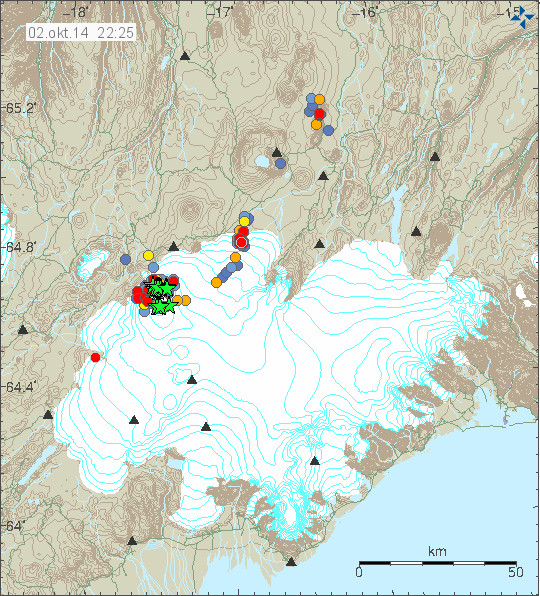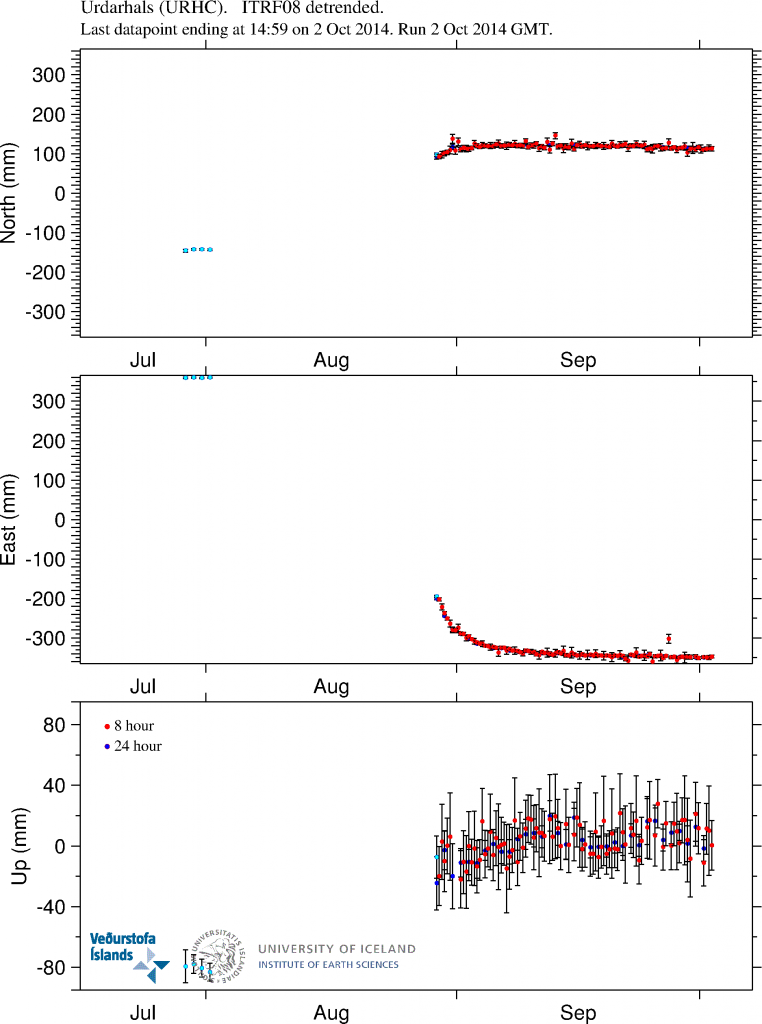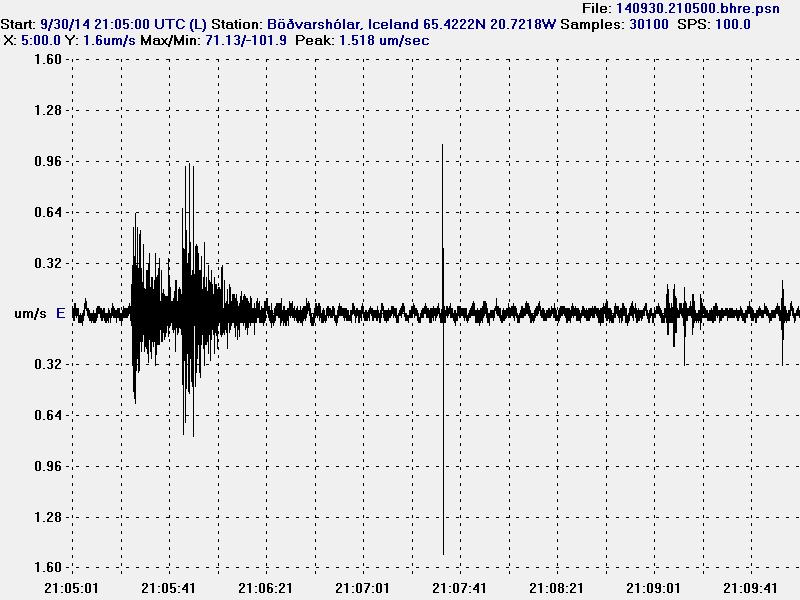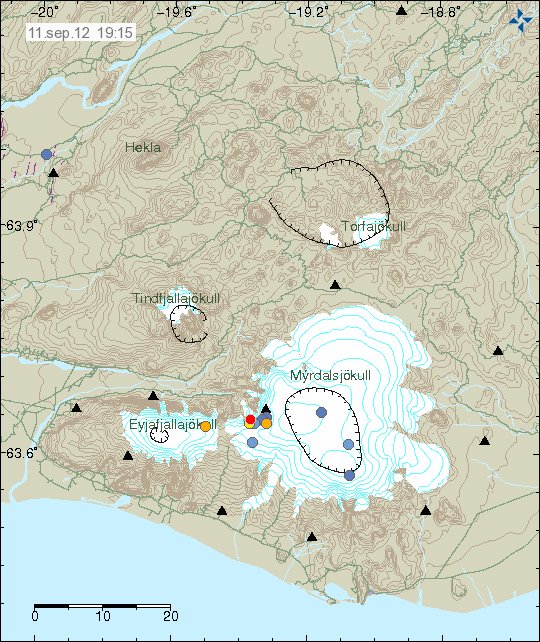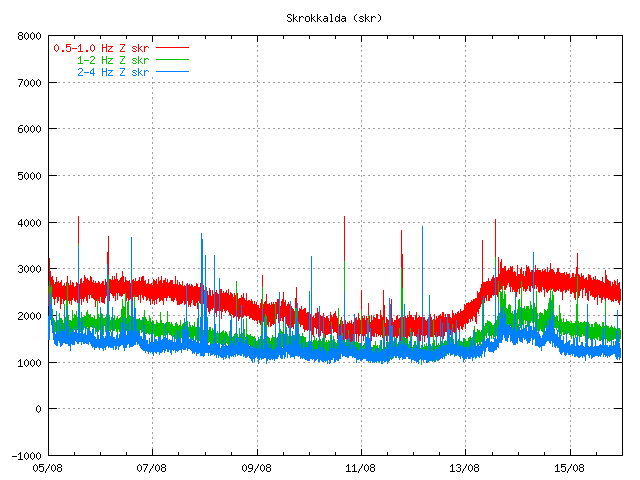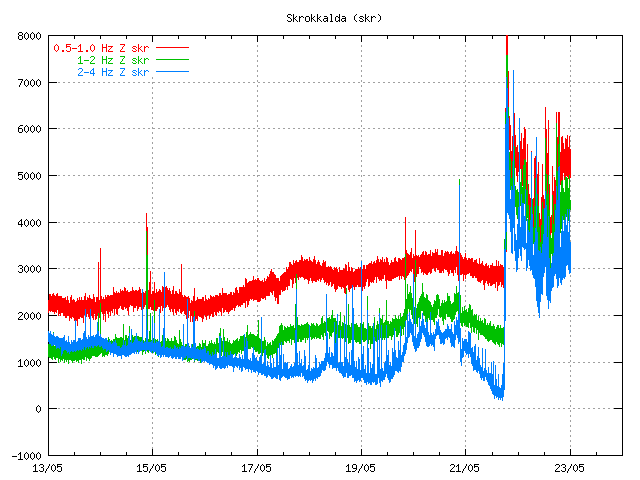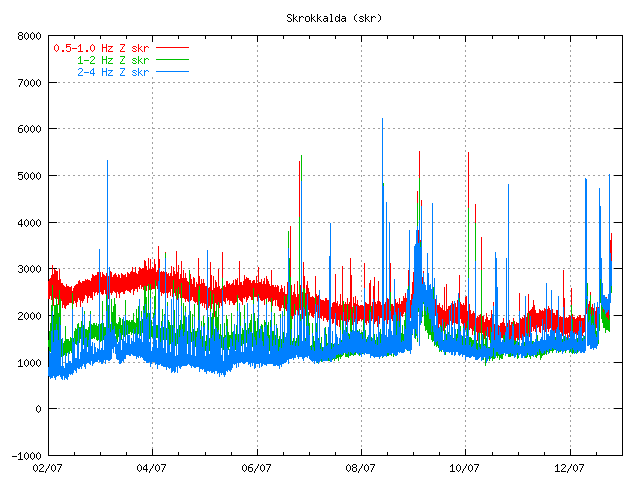This information is going to get outdated quickly.
Bad weather
Bad weather is expected in Iceland for the next few days. Storm can be expected to take place. I am not sure on the details. Check Icelandic Met Office weather information for more details.
Status of Bárðarbunga volcano on 6-October-2014
- The eruption in Holuhraun has picked up again from a minor slowdown on Saturday.
- Strong earthquake activity continues in Bárðarbunga volcano. Strongest earthquake on 6-October-2014 was a magnitude 5,1 earthquake. Other earthquakes have been smaller in magnitude.
- Bad weather is preventing good observation of Bárðarbunga volcano, both in Holuhraun and over Vatnajökull glacier. Visibility can be extremely limited at times.
- SO2 pollution was detected in Reykjavík during the evening of 6-October-2014. It did go over 700 μg/m³ for a short moment in Reykjavík and nearby area. More pollution from the eruption is expected tomorrow.
- The lava field in Holuhraun eruption is now larger than 50 square kilometres in size. I don’t have the exact size for today.
- Bárðarbunga volcano caldera continues to drop and has dropped more than 30 meters by now.
- The activity in Holuhraun appears to be slowly getting smaller with time. This is normal, this also increases the risk of new eruption starting soon.
- No further information for today that I am aware of at this moment.

The earthquake activity in the past 48 hours in Bárðarbunga volcano. Green stars are earthquakes with magnitude above 3,0. Copyright of this image belongs to Icelandic Met Office.
Short overview of the earthquake activity over the weekend
- Earthquake activity picked up on Saturday compared to Friday and Sunday.
- Eruption activity did drop in Holuhraun craters on Saturday, it did pick up again on Sunday far as I know.
- Far as I know there is nothing else to report.
Other things related to Bárðarbunga volcano
I’ve seen a lot of strange discussions about Bárðarbunga volcano. I get even stranger emails at times (no, I don’t answer those). Far as I know there isn’t any Felsic magma (or Andesite) in Bárðarbunga volcano caldera. Reason for that is it appears to have been really long time since the caldera erupted. I am not sure on exact time scale, but it is from 400 to 700 years at the shortest. The forces at work in Bárðarbunga volcano are extremely complex and they are not properly understood today, the eruption in Bárðarbunga volcano is going to add that knowledge with time. Since it is going to take many decades of study to analyse and figure out what the data collected today means. I dismiss all strange and odd ideas about what is going on in Bárðarbunga volcano, since they don’t fit the data that I am seeing (along with everyone else that is viewing that same data, interpretation of that data might differ)
It is also worth to mention that only north part of the Bárðarbunga volcano system has shown rifting in only one fault. There are many more in this area that have not yet moved. I expect them to move in next few months to years. Then there is the matter of all the activity that is going to take place in Bárðarbunga volcano south of it. That area has not moved so far, it is going to rift in the same manner as the area in the north of Bárðarbunga volcano. When is impossible to know, but I expect it to happen in next few months to years. This is far from over, in fact, this activity in Bárðarbunga volcano has barely started, even if it has been erupting now for almost one month and a half. There are going to be quiet period with no eruption activity in Bárðarbunga volcano during this process. Those quiet periods are going to be different in length, they are going to happen, it is just a matter of time. That is how rifting works in rifting zones (and rift valley) around the world.
Next update is tomorrow if nothing major happens in Bárðarbunga volcano.
Article updated at 01:09 UTC on 07-October-2014.

